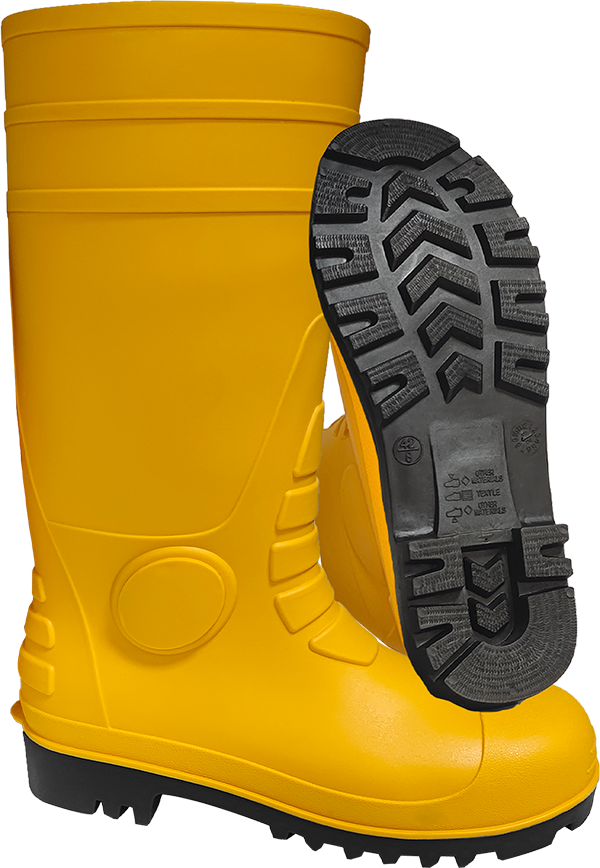The water resistance of safety shoes is one of its important characteristics, especially in wet or waterlogged working environments. The following is a detailed introduction to the water resistance of safety shoes:

First, waterproof material
The water resistance of safety shoes mainly depends on the material used. Common waterproof materials include PVC (polyvinyl chloride), PU (polyurethane), specially treated leather (such as waterproof cowhide), and composite materials such as nylon. These materials have their own characteristics:
PVC: with waterproof, anti-corrosion, lightweight and other characteristics, is one of the commonly used materials for making waterproof safety shoes.
PU: Good elasticity, light weight, resistance to liquid erosion, also suitable for making waterproof safety shoes.
Waterproof leather: Specially treated leather is not only breathable, but also has excellent water resistance, which can keep the feet dry.
Nylon composite material: Although nylon itself is not directly waterproof, but through the composite or surface treatment with other materials, it can also achieve a certain waterproof effect.
Second, waterproof structure design
In addition to the choice of materials, the water resistance of safety shoes is also closely related to its structural design. Here are some key waterproof design elements:
Closed tongue: The design of closed tongue can effectively prevent water from penetrating through the mouth of the shoe.
Waterproof lining: The use of waterproof materials in the shoe lining, such as waterproof breathable film, can keep the foot dry while preventing moisture penetration.
Waterproof stitching: Use waterproof stitching to ensure that all parts of the shoe can effectively block water.
Third, waterproof performance test
In order to ensure that the waterproof performance of safety shoes meets the standard, a series of rigorous tests are usually carried out. These tests may include:
Immersion test: the safety shoes are completely immersed in water for a certain period of time to observe whether there is water infiltration into the shoes.
Spray test: Simulate rainy days or splashing environment, spray test safety shoes to check their waterproof effect.
Hydrolysis resistance testing: For specific materials (such as PU), hydrolysis resistance testing is performed to assess their long-term water resistance.
Fourth, use and maintenance
In order to ensure that the waterproof performance of safety shoes is durable and effective, users should pay attention to the following points during use:
Avoid prolonged immersion in water or exposure to high humidity.
Clean and maintain shoes regularly to keep them dry and clean.
If necessary, waterproof your shoes with a maintenance product such as a water repellent spray.
To sum up, the water resistance of safety shoes is one of the important characteristics of protecting the feet from wet environment. Through the selection of appropriate materials, the use of scientific waterproof structural design and strict testing standards, you can ensure that safety shoes have excellent waterproof performance. At the same time, the user should also pay attention to the correct use and maintenance methods during use to extend the service life of the shoe and maintain its waterproof performance.
Our factory was established in 2003 and we specialize in personal protective equipment, including PVC rain boots, rubber rain boots, EVA rain boots, safety shoes, helmets and other P P E products.
Contact: Lily
Phone: +8618622580676
E-mail: lily@dxyglobal.com
Whatsapp:8618622580676
Add: TIANJIN CHINA